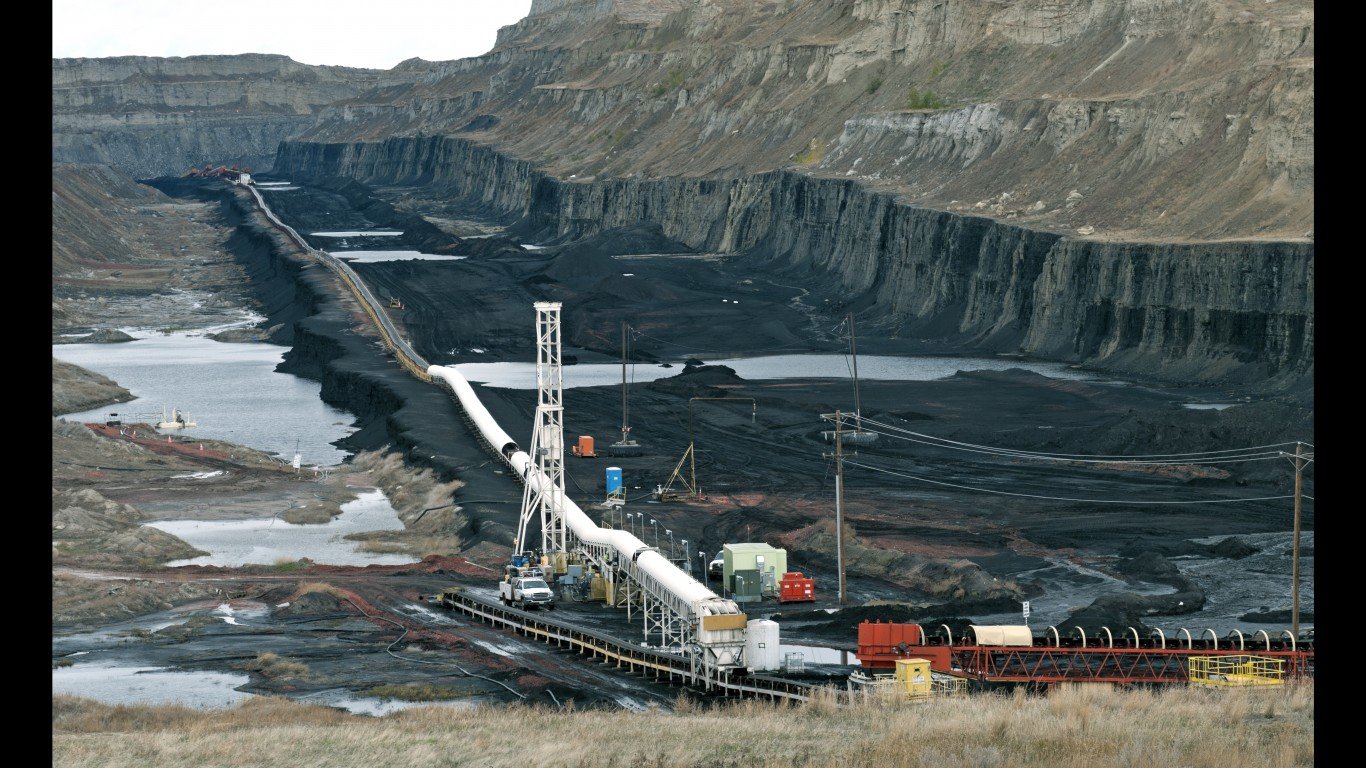

That coal is losing its place as a fuel for electricity production in the United States, the Trump administration and the country’s leading producers are trying to shore up coal’s declining role in U.S. energy supplies. Last month the Trump administration’s EPA repealed the Obama administration’s Clean Power Plan and replaced it with its own Affordable Clean Energy Plan.
On the same day, two U.S. coal giants, Peabody Energy Corp. (NYSE: BTU) and Arch Coal Inc. (NYSE: ARCH), announced a joint venture to merge operations at five mines in Wyoming and Colorado with the goal of cutting production costs and making coal more competitive with renewables like solar and wind power generation. The phrase that comes to mind is, “whistling past the graveyard.”
We’ve noted before that power generation capacity from renewable sources (hydropower, biomass, geothermal, solar and wind) surpassed the generation capacity of coal-fired power plants in April. In 2007, U.S. coal consumption totaled around 1.05 million tons; by 2018 that total had fallen to 637 million tons. That decline may slow down, but it will never reverse course.
The Institute for Energy Economics and Financial Analysis (IEEFA) in a report last week said the signs of an “orderly retreat” from coal-fired power generation may be turning into a rout. As companies like Peabody, Arch, Westmoreland, Cloud Peak and Blackjewel consolidate or file for bankruptcy (as Westmoreland, Cloud Peak and privately held Blackjewel have done recently), Powder River Basin producers are crumbling.
As the IEEFA report notes, how bad are things, really, if the two companies that produce nearly 200 million tons of Powder River Basin coal have to form a joint venture in order to make a profit? Cloud Peak postponed an auction of three mines with production of 50 million tons in 2018 as objections to the June date poured in. The auction is currently scheduled for later this week.
Blackjewel unexpectedly declared bankruptcy last week and shut down two Colorado mines that produced nearly 36 million tons of coal last year. The company was once believed to have been a potential bidder for at least some of the Cloud Peak mines.
Westmoreland, which filed for bankruptcy about nine months ago, is likely to be stuck with its Montana mine now that Talen Energy, owner of the Colstrip Power Station, has said it will close the remaining two generation units at the end of this year, about two and a half years ahead of schedule.
Coal exports are not riding to the rescue, either. Exports in May were down 5.8% year over year, and the price per metric ton was down by more than 20% for thermal coal, according to a report from S&P Global Platts.
No new coal-fired power generation is planned for the United States, and closings or conversions to natural gas continue as utilities keep turning their backs on coal under pressure from individual and corporate customers for cleaner energy. There’s nothing in the Trump administration’s ACE plan that can change the economics of coal-fired electricity generation.
The next fight, which promises to be even more contentious, comes when renewables begin replacing natural gas, which is around half as dirty as coal. The knock against renewables has been their inability to generate power when the sun isn’t shining or the wind isn’t blowing and that fossil fuels always will be required to meet peak demand periods.
That’s changing as a result of falling prices for battery storage, with four-hour peaking capacity at massive solar photovoltaic installations. According to a June report from the National Renewable Energy Laboratory, “the addition of renewable generation can significantly increase storage’s potential by changing the shape of net demand patterns; for example, beyond about 10% penetration of solar photovoltaics, the national practical potential for 4-hour storage to provide peak capacity doubles” from a current limit of about 28,000 megawatts nationally of a total of 261,000 megawatts of peaking capacity.
Demand for electricity is only going to grow as more electric vehicles take to the world’s roads and highways and due to the massive demands from artificial intelligence and machine learning programs. Coal does not figure to meet much of that demand.
Essential Tips for Investing: Sponsored
A financial advisor can help you understand the advantages and disadvantages of investment properties. Finding a qualified financial advisor doesn’t have to be hard. SmartAsset’s free tool matches you with up to three financial advisors who serve your area, and you can interview your advisor matches at no cost to decide which one is right for you. If you’re ready to find an advisor who can help you achieve your financial goals, get started now.
Investing in real estate can diversify your portfolio. But expanding your horizons may add additional costs. If you’re an investor looking to minimize expenses, consider checking out online brokerages. They often offer low investment fees, helping you maximize your profit.
Thank you for reading! Have some feedback for us?
Contact the 24/7 Wall St. editorial team.



